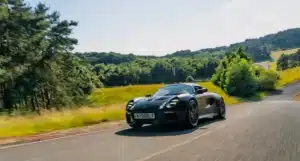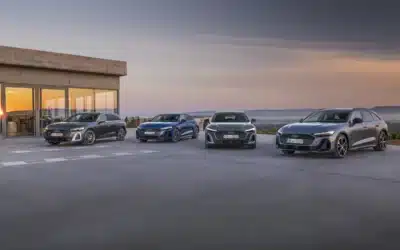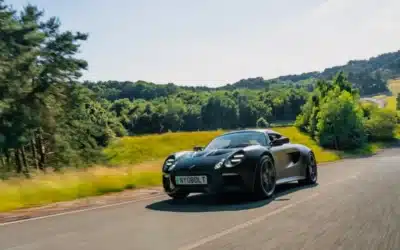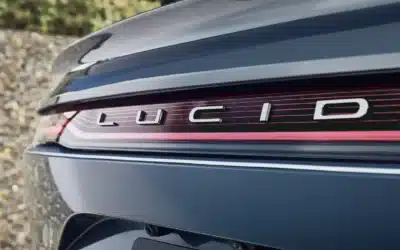
Whether you love them, hate them, or are undecided about electric vehicles (EVs), one thing everyone can agree on is that they are fast, extraordinarily fast. This is largely due to the unique nature of how torque is delivered with an electric drivetrain. With direct and instantaneous drive output to the wheels, electric motors can spin up to maximum revs instantly, and peak torque can be deployed in a fraction of a second.
And if motorsports is about anything, it’s about acceleration and speed! So EVs would seem to be a natural fit for motor racing. Henry Ford said, “Auto racing began five minutes after the second car was built.” That sounds about right. The first race recorded in history books was in 1867! It was also the world’s first illegal street race, as it contravened the law that required a man to walk in front of the car with a red flag. Hence, it was run at 4:30am on 30th August between Ashton-under-Lyne and Old Trafford, Manchester in England.
Given this human propensity for competitiveness, there is no doubt that electric vehicles would have been raced the minute two of them were unplugged together. But when it comes to formal motor racing disciplines, Formula E, the pinnacle of EV racing, held its inaugural race a decade ago in 2014!
The Growth in EV Motorsports
Key disciplines within EV motorsports include Formula E, and Extreme E, as well as a raft of new and upcoming racing series. However, Formula E has been at the forefront, establishing itself as the premier racing series with teams backed by major automotive manufacturers such as Audi, BMW, and Jaguar, with races held across the world.
Extreme E, launched in 2021, takes a unique approach by combining electric racing with environmental activism. The off-road series races in remote locations around the world, highlighting the impacts of climate change while promoting the adoption of electric vehicles.
We asked Ellis Spiezia of Ellysium Racing, a professional electric racing driver, advocate, and ambassador for electric motorsport, how EV racing has come of age.
“In the past five years, we’ve seen an exponential jump in driver and fan interest. It’s only a matter of time before it grows even larger. The switch-up of race weekend formats to a more event or festival atmosphere has been an important factor in attracting a new audience,” he explained.
“It used to be just Formula E, and now we’ve got a number of other series developing. It’s still a challenge and we’ve seen our fair share of projects struggling or collapsing, but that comes with the territory.”
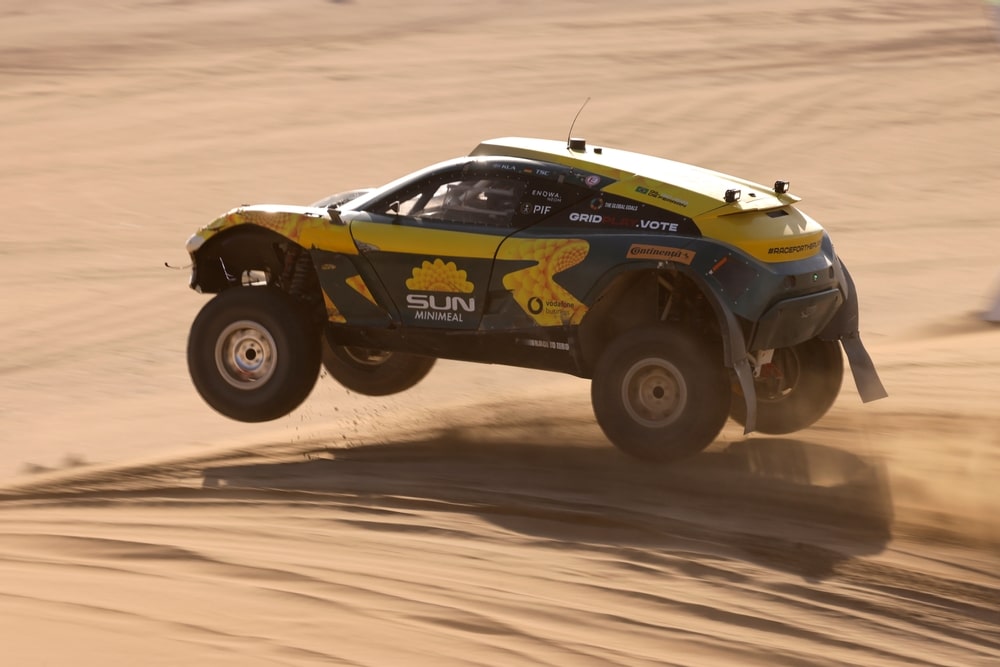
Extreme E is an off-road series with races in remote locations, combining electric racing with environmental activism.
Response from Motorsports Fans
The transition to EV racing has been met with mixed reactions from motorsports fans. Traditionalists who revel in the roar of internal combustion engines have been skeptical of the quieter EV racers. Nonetheless, a growing segment of fans appreciates the environmental benefits and the technological innovations that EV racing brings.
“It’s mixed, of course,” says Spiezia, “but there’s a lot more openness now than even just a few years ago. I think the focus on performance is key, and seeing series shifting their focus to new generational fans and a younger base.”
Formula E, for instance, has attracted a younger, more environmentally-conscious audience. Its city-based races provide an accessible and engaging format, drawing crowds that might not typically attend traditional motorsport events. The inclusion of fan engagement elements, like the “Fanboost,” which allows fans to vote for their favourite drivers to receive an extra power boost, has further endeared the sport to new audiences.
Drivers’ Perspectives on EV Racing
Drivers like Lucas di Grassi and Sébastien Buemi, both former Formula E champions, have praised the series for its competitive nature and the technical skills required to excel in EV racing.
Ellis Spiezia, who will be participating in the RX2e electric rallycross series in Europe this summer and Nitrocross in the USA in the autumn, echoes this sentiment: “A racing driver is a racing driver. There’s no distinction. And we all want performance, which you can’t deny with electric. It’s definitely a unique driving style and different feel, and one that is as fast as it gets.”
EV racing is also opening doors and opportunities for those who would not normally be able to enter the elite sport. “Living in the city and not coming from a motorsport family, it wasn’t obvious that being a racing driver was even an option for me,” admits Spiezia.
“In 2019, electric competitive karting was just getting off the ground in Europe. It was arrive & drive, lower cost than combustion, and every kart was the same, so it offered a LOT of benefits that focused on driver development & performance and not paying for advantage. From there, it was clear that I could be a first mover in a brand-new sector of a legacy sport, an opportunity that only comes around once in a century.”
Technological Trickle-Down to Road Cars
Historically, motorsports have been a testing ground for new technologies that eventually make their way into consumer vehicles. The same is true for EV racing. Advancements in battery technology, energy management systems, and regenerative braking are finding their way into the cars you buy at the dealerships.
Car companies participating in Formula E often use the series as a platform to test and refine technologies intended for road cars.
Ellis Spiezia adds, “Motorsport is the breeding ground for innovation that impacts road cars and now a whole bunch of other industries like healthcare and big tech. In electric motorsport, we’re seeing a lot in the way of software innovation, IoT (Internet of Things), regenerative braking, safety, battery development, and exploring new ways to charge cleanly.”
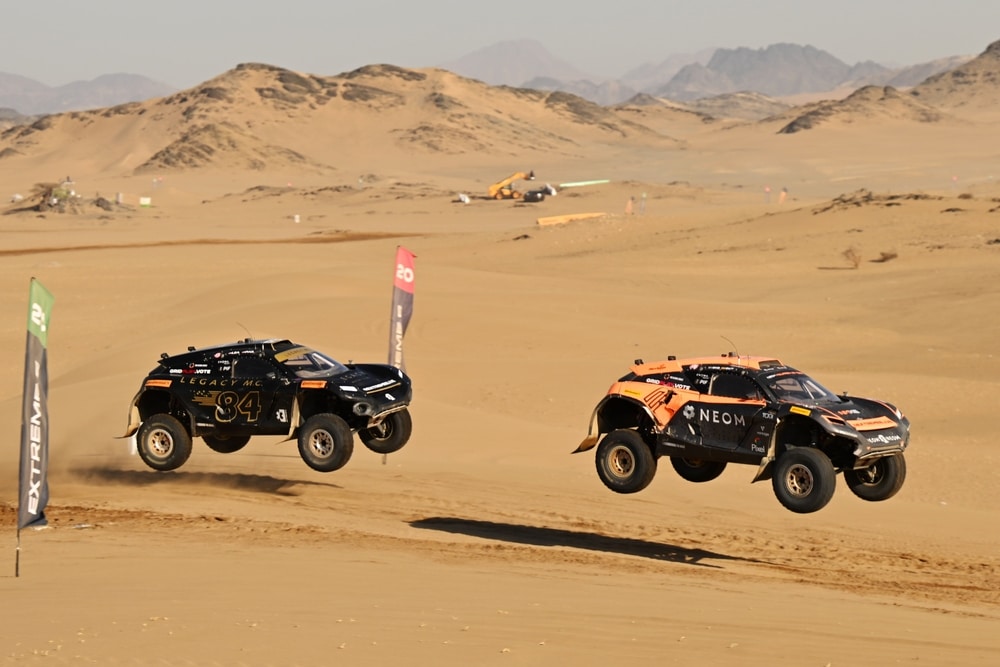
Saudi Arabia hosts both Extreme E and Formula E races.
EV Racing in the Middle East
Countries like Saudi Arabia have hosted major EV racing events, underscoring the Middle East region’s commitment to sustainability and innovation.
Saudi Arabia’s Diriyah E-Prix, part of the Formula E calendar, was first held in December 2018 and showcases the kingdom’s Vision 2030 initiative aimed at diversifying its economy and promoting sustainable energy. The race, set against the backdrop of the historic Diriyah district, has not only put Saudi Arabia on the motorsports map but also highlighted the potential for electric vehicles in the region.
Extreme E began with the Desert X-Prix in Saudi Arabia in April 2021. The series maintains a “Legacy Programme” to provide social and environmental support for locations affected by climate change. It also promotes equality in motorsport as each team has both a male and a female driver who share equal driving duties.
Meanwhile, earlier this year, the UAE Electric Vehicle Grand Prix was held at the Al Forsan International Sports Resort in Abu Dhabi, in which 450 students from 28 schools in UAE, USA, Italy, and Egypt raced electric cars they had built.
Racing into an Electric Future
The growth of EV racing serves to highlight the potential for EV technology, engineering, and innovation. The fact that advancements on track will make your daily-driver EV safer and more efficient is a given.
However, there is another important aspect to electric motorsports, and that’s to prove that it can be fun, exciting, and engaging, as part of an effort to grow and encourage acceptance of EVs. Nowhere is this truer than in a region that has been enamoured with speed and competition since the earliest days of camel and horse racing.




